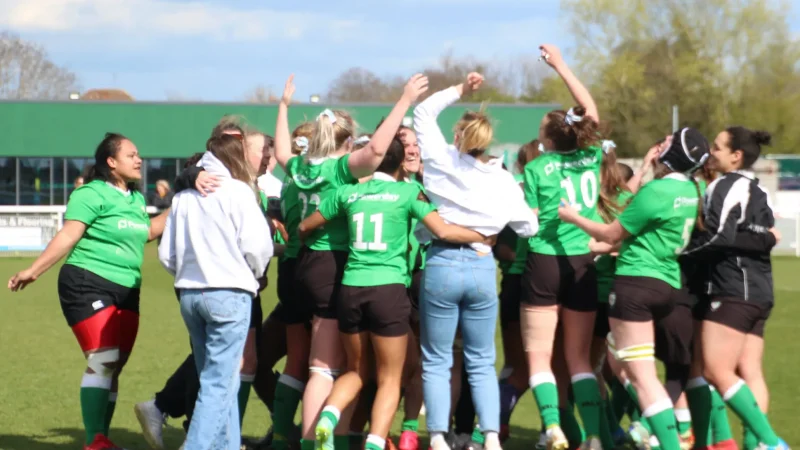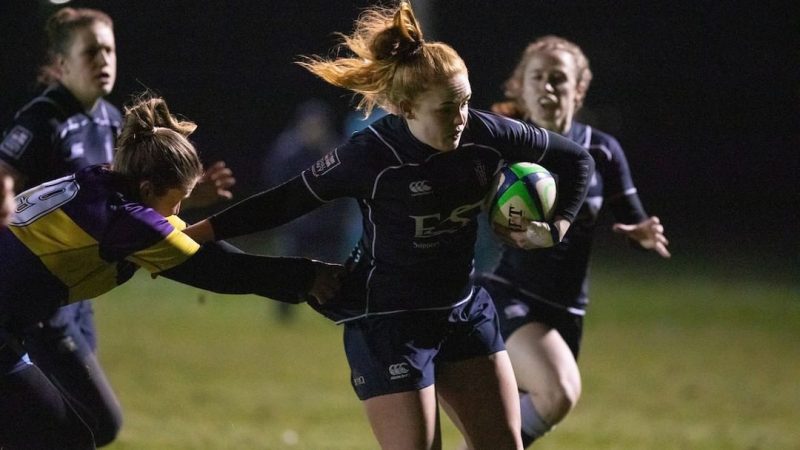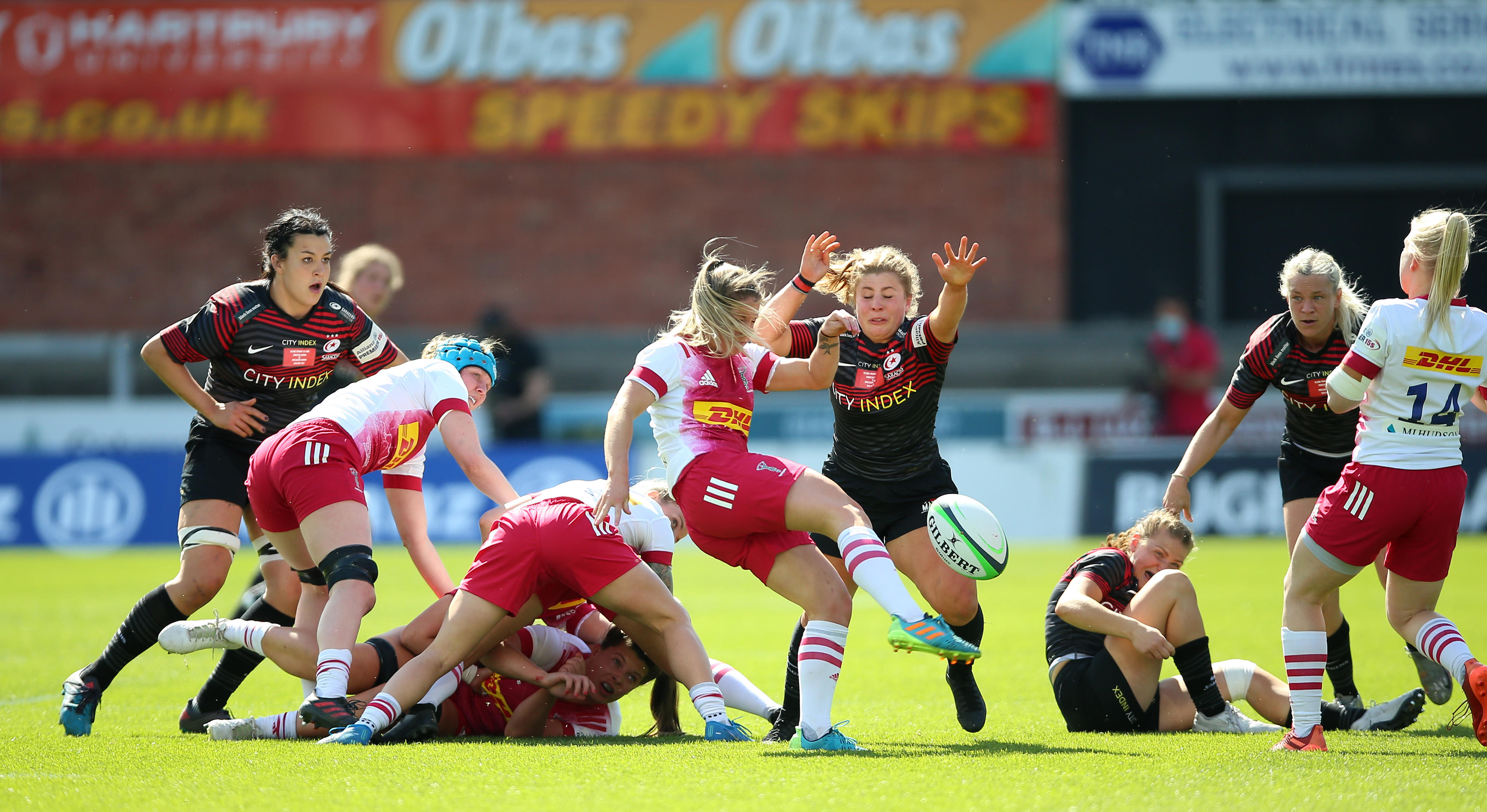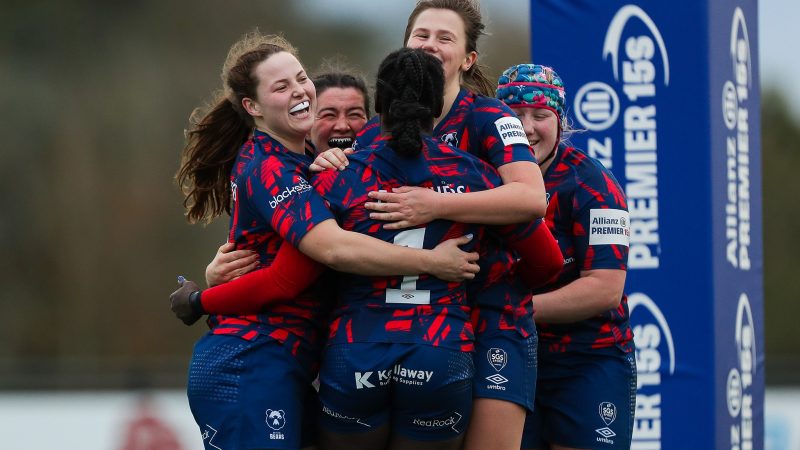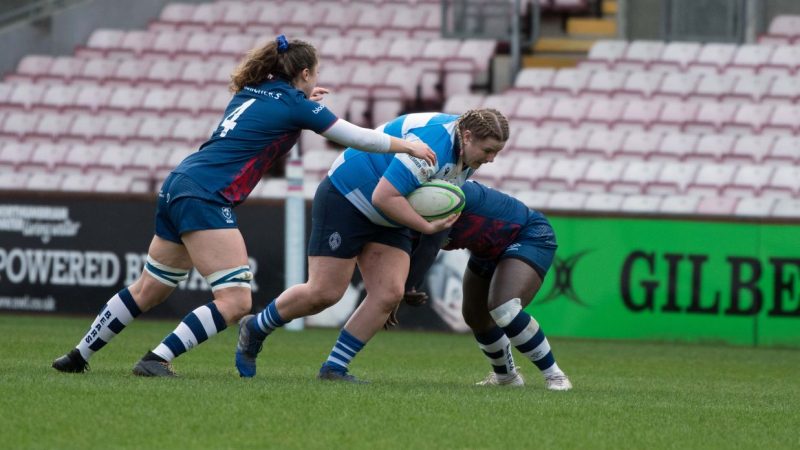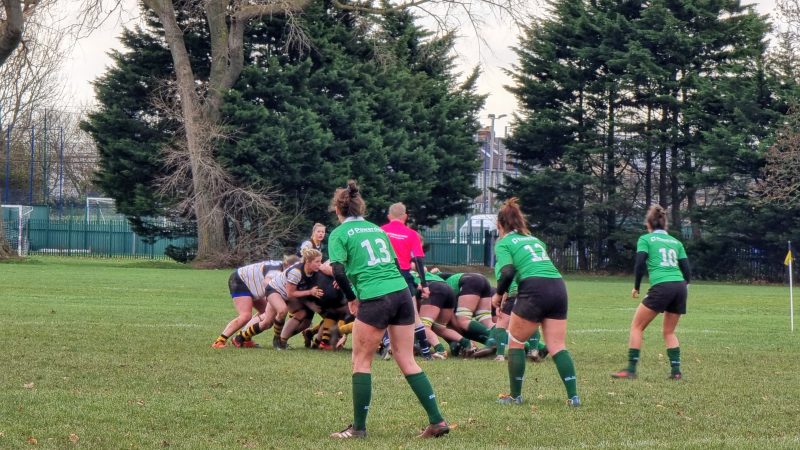A year out from the World Cup we check in with Simon Middleton for a Red Roses status check.
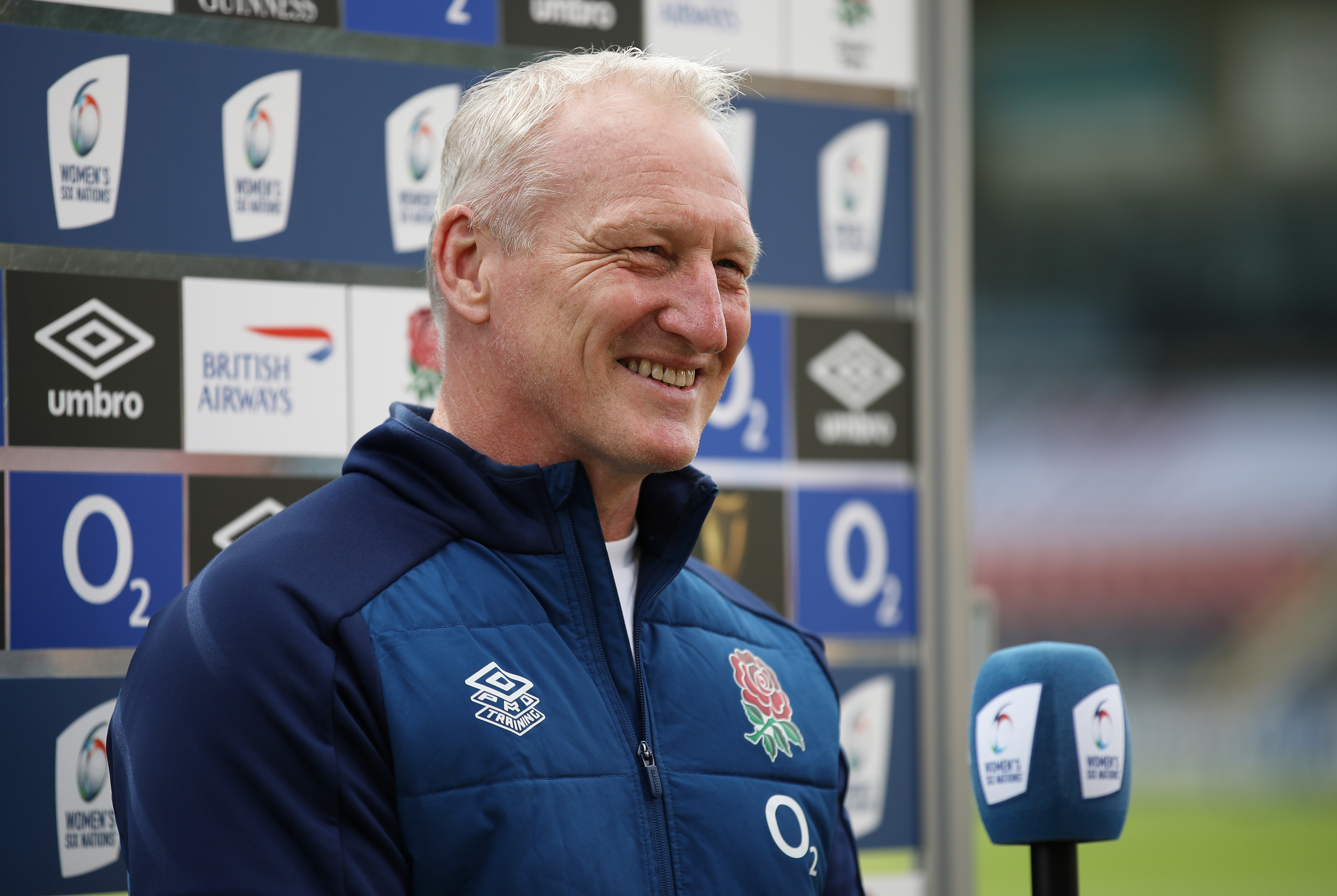
I’ve been lucky over the past couple of years to regularly be able to take part in press availability for England Women and to talk to players alongside head coach Simon Middleton. Mids is one of rugby’s good guys, an affable Yorkshireman who is refreshingly open and honest in an increasingly media savvy sport. I’ve often thought it would be interesting to sit down one on one and really pick his brains on the status of his team and his thoughts for the future so after this years Six Nations I made arrangements to do just that.
It’s a bright, sunny, June lunchtime as we both dial into a Zoom call and, initial connectivity problems out of the way settle down to chat. Straight away I can’t resist diving into the tournament that ended a few weeks ago.
“There were certainly elements of what we did that were really pleasing.” Simon tells me when I asked how he thought the Six Nations went. “We’ve been putting a lot of work into changing the dynamics of our game. Upping the intensity, the resilience… the physicality of the side. That was reflected in certain ways, but not in all the ways we wanted. We wanted to try and build the intensity we play with and to do that you need continuity. In certain areas of the field we didn’t give ourselves the opportunity to do that. We were a bit too loose with the ball in the opposition half, we made a few errors and kicked poorly at times…. All that added together meant we didn’t get the continuity we wanted and didn’t really stretch some of the sides we played physically.”
“Our set piece was nowhere near where we needed it to be, we came under a lot of pressure from that point of view. There’s lots of factors involved in that but ultimately, we had good moments in set piece, our defensive lineout was excellent throughout the competition, our attacking lineout in the last France game was very good. Our scrum was under pressure consistently, we missed a lot of big moments. When you’re playing against sides who don’t offer you too many chances you get certain moments you have to take that generally revolve around your set piece and we missed so many opportunities to either launch into plays or create point scoring opportunities. Particularly in the last two games. That’s an area we need to be better at and we recognise that.”
“Then again, you look at some of our passages of play and our ability to maintain high intensity in defence was really important for us and we did that well, particularly defending our own line. The robustness of the players shone through. We didn’t lose any players to injury – we had one post-game concussion with Cath O’Donnell – but we didn’t have any players leaving the field through physical injuries sustained through impact while other teams had quite a few.”
It’s a crucial point in Middleton’s planning and leads naturally to reflections about managing a team through a World Cup. “You don’t want to see any player getting injured, but to win a World Cup – to beat New Zealand and France, and probably USA and Canada on the way – you’ve got to be physically resilient. In a competition that has an extra round in it now not only do you need a strong squad in terms of quality to get you the results along the way but you need players who can back up high quality physical games week on week. We paid a heavy price in 2017 for not being robust enough. During the tournament the side we ended up putting out on the field, whilst it was a good side, had a shape about it we didn’t want. With Emily Scarratt at full back, Meg Jones at 13, Vicky Fleetwood only half fit…. We want to build up that resilience and I think that was reflected in the Six Nations. Certainly, when we look back at the positives that came out of it.”
It’s clear that Simon sees his side as very much still under development and the delay of the World Cup is a huge opportunity to address aspects of the game and squad that might otherwise be missed. There are of course several factors in play, not least the adapted rules that allowed the Allianz Premier 15s season to go ahead. Those were necessary and allowed the Red Roses players to get plenty of much needed game time but came at the expense of some set piece elements, particularly the scrum.
With a clear plan for the year ahead, I’m intrigued to understand where Middleton sees the highest need for development within his squad. There are probably a dozen or more names that anyone who has watched the Red Roses on more than a couple of occasions can reel off and who will certainly be involved but equally there are always spots where more can be done. “I think there’s opportunities right across the side.” Mids says when asked, but when pushed for a little more he concedes, “I think we’ve got great strength in depth now across the whole pack that we didn’t have four years ago. Where are the areas that people can really make an impression? I think our half backs are there to be challenged, particularly around the 10 area. Zoe Harrison is a terrific player and has been in the programme for a couple of years so for her the challenge is to put her hand up to fill the void that Katy Daley-Mclean left, but at the same time Helena Rowland has come back into the equation. She has a very different skill set to Zoe but is a fantastic all-around player. Then you’ve got Meg Jones who brings something different whether at 10 or 12…. Which leads to the 12 shirt which six months ago I was probably quite nervous about but now it’s about who takes the opportunity and finding the best fit. Meg can fit in there, we have Amber Reed who was probably playing the best rugby of her career before her foot injury. Zoe and Helena have both played there and we looked at Lagi Tuima there too. It’s finding the balance in the 10-12 slot.”
“Then you’ve got to look at who is going to challenge Emily Scarratt for the outside centre slot.” It’s not something most England fans like to think about… Scarratt is such a huge player for the team, she would be for any nation, that the thought of her not being in the side is a little bit scary, but injuries happen and at some point every player has to hang up their boots…
“Will anybody challenge her for the next World Cup? Probably not, but what we definitely need is an understudy. We’ve got a couple of players in the group who we probably just need to push to focus on that position. With Lagi for instance we looked at 12 not so long ago, but with Meg, Helena and Amber back in the equation do we develop on focusing her time as a thirteen?”
“There’s also the full back position. Sarah McKenna has been the model of consistency for us, so reliable, which you probably wouldn’t have said about her in the past as she was a mercurial player at times but now she’s matured into a good decision maker and a good leader with a great skill set. Then you’ve got Ellie Kildunne who is a genius of a player but has underperformed since coming back over from the sevens programme. Most of that has been down to her not being fit enough, she’s had a number of injury issues and we need to get her back to the best she can be.”
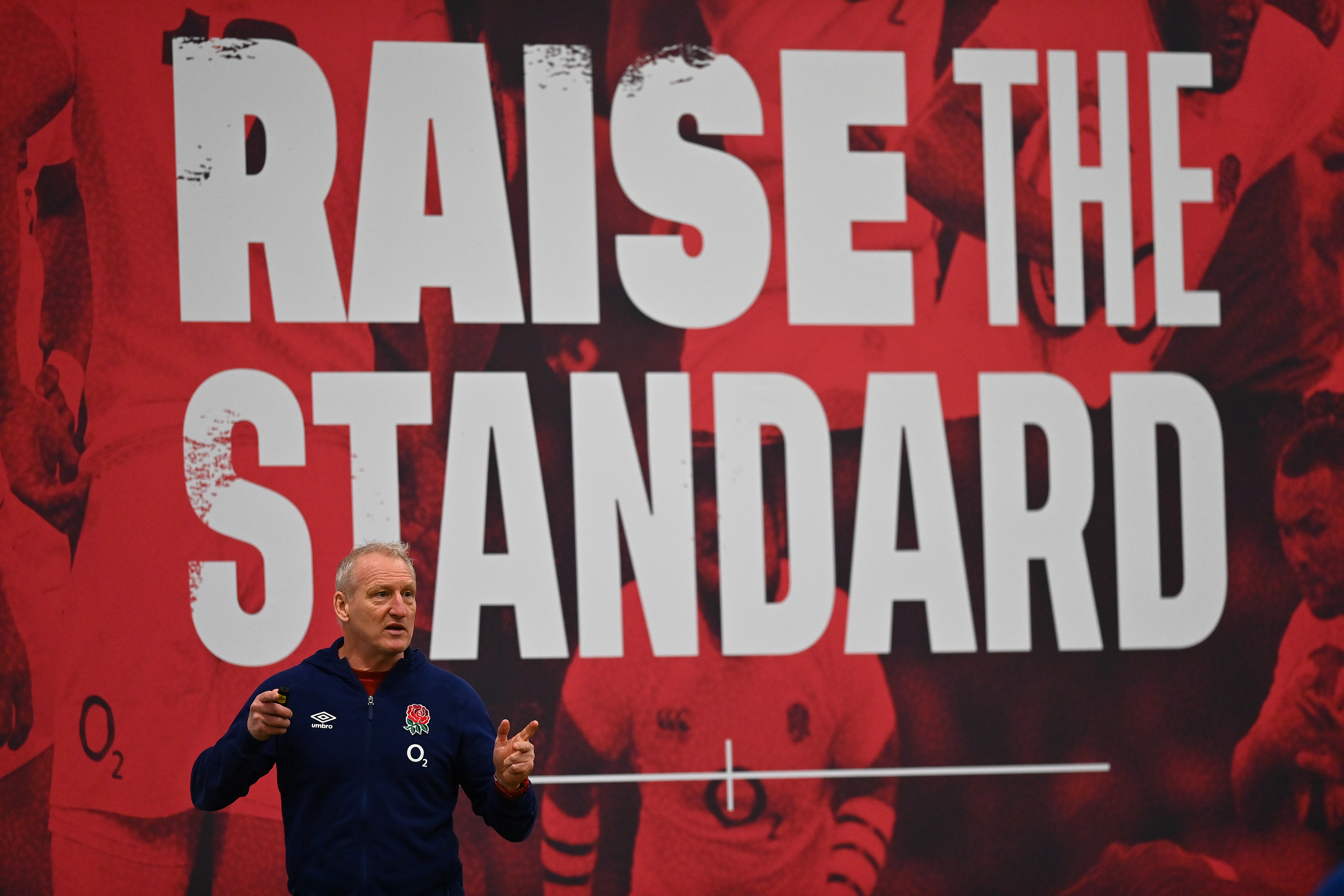
“so to be honest Matt, I look across the side and ask is there anywhere screaming out for someone to grab it by the horns? Probably five or six positions, but none that worry me. We need a third hooker and we’re looking at that… we’ve got a couple of players coming into camp we want to invest some time into…”
It’s at this point in the conversation that I know exactly who Simon is going to mention next and I can’t help but smile as for once it isn’t me talking about Maud Muir! “She’s sensational! I know we didn’t get her onto the field in the six nations but she was 24th player for three of the games and trained in every camp. You’ll be seeing a lot of her, she brings something a bit special! We just need to find the position for her…. If it’s hooker we need to make sure her throwing is up to standard. When she can hold her own from that point of view you’ve got a player who can slot in at hooker or tight head and is fantastic around the park!”
“There’s a couple of other players we’re looking at and we’ve got a few to come back too. One of the bonuses of the World Cup being delayed a year is that we get Morwenna Talling back into the equation. I think she’s probably the best young player I’ve seen since Megan Jones in terms of her all-around ability. Such a diverse skill set! Physically she’s a great player but her decision making, her handling… all this at 18 years old! It was a huge blow for her to suffer an ACL injury but we’ve got time to get her back on the park, hopefully for the six nations at the latest, so we can get some competition under her belt before the World Cup.”
That’s not even mentioning the likes of Sarah Bern and the only recently returned Bryony Cleall who Mids is a big fan of too, there’s plenty of depth in that England pack and if Simon can get most of his options fit at the same time he has a headache on his hands!
That depth is built on the quality of play in the Premier 15s, which has taken a real step forward this season. Middleton speaks of how impressed he is with the composure Harlequins showed in the final, getting over the mental hurdle of having lost to Saracens in two finals previously. Saracens were no slouches either with Red Roses stalwart Marlie Packer sometimes seeming to single-handedly keep them in the game.
After the final the player receiving most of the focus was rightly Shaunagh Brown, the prop was not only an immense figure for her team, but her post game interview spoke to a wider need for elite women’s sports to get the respect it is long overdue.
There was another player who caught my eye and got my personal vote for player of the match (for what ever that is worth) and as Mids had mentioned her a few times already I took the chance to delve a little deeper into his thoughts about Lagi Tuima. The Leadership Lagi showed, especially after her partner in the centres was taken out of the game early through injury, marked a bit of a coming of age I think, as she showed she is not just a hugely talented young lady but a truly well rounded rugby player. “I couldn’t agree more!” was Simon’s reply. “I swapped a couple of texts with Burf after the game, she started so well and in big names you need big players. We’ve talked to Lagi over the last year about her role and what we’re looking to see from her. We couldn’t get her to a couple of the Six Nations games due to visa issues so when we trained, she ran out with the opposition team against the starters. We ran those games for the players who weren’t in the matchday squad and there were a couple of those sessions – full contact training sessions – where she really stepped up as a leader. We looked at the two sides and thought it would be tough and she stepped up a lot, and we saw that in the final where she really put her hand up. She’ll be able to reflect back on that and it could be a really defining game in her development.”
I’m intrigued to know just how much effort is spent in keeping track of all the young talent coming through at the Premier 15s level so I fire a name at Simon to get his thoughts. Sadia Kabeya is a player I’ve been watching since she first showed up at Richmond and who really blossomed this season as a key part of the Wasps Ladies back row. So how does my positive view of her compare to that of the England head coach? “She’s outstanding! We love the look of her, when you look at that position (openside flanker) that’s been so established by Marlie and Fleeto for such a long time. You need somebody who will let those players know if they’re not on top of their game the World Cup won’t be a shoo-in she’s the sort of player who could easily be on their heels. Mark Luffman (England Women forwards coach) has been talking about her for a while and she’s stood out every time I’ve seen her!”
Between his coaching team Middleton aims for every game of the Premier 15s to get watched each week and the coaches then share their insight. During lockdown they made the decision not to attend matches in person so as not to add any extra difficulties to the already stressful situations for clubs managing their grounds. Instead they’ve made us of the fact most teams streamed their home games and have been sat at home with a game on the TV and others on laptops and tablets while the coaches are all on a conference call…. It’s been like their own take on soccer Saturday and it sounds like its own web series in the making!
With that approach the coaches probably have a closer view of all the potential England players than ever before in the women’s game. This means they can focus not just on centrally contracted players but those who are in full time employment or education. Simon is honest about the effort to juggle this and although he keeps the details to himself, he does mention there has been one player in particular who they worked hard to bring into the team but who was unable to secure the time off from their job. In other cases they can work with the players, in one example Harriet Millar Mills is a teacher who takes classes remotely while in camp and is able to be flexible with her gym work and physio needs while at Pennyhill Park so she can hideaway and take classes while maintaining her involvement in the team. With players at University there are opportunities for development contracts too, to ease the burden on them. It’s not perfect but seems to be tracking in broadly the right direction for international players.
With clubs like London Irish and Bath throwing their hats into the ring and Newcastle Falcons previously tendering a bid for a spot in the AP15s the move toward a self-sustaining league seems inevitable, if probably further along than most fans, and indeed probably most players, would like. Mids is open that a full time, professional league will only be a good thing for England, even without reaching that point the league is doing so much at an elite level and a professional standard.
It’s clear there is still a journey ahead for women’s rugby in this country, but as always after speaking with Simon, I’m left feeling that things are certainly headed in the right direction. The future, for the Red Roses, looks bright and I’m hopeful the same will be true for the Allianz Premier 15s too.
